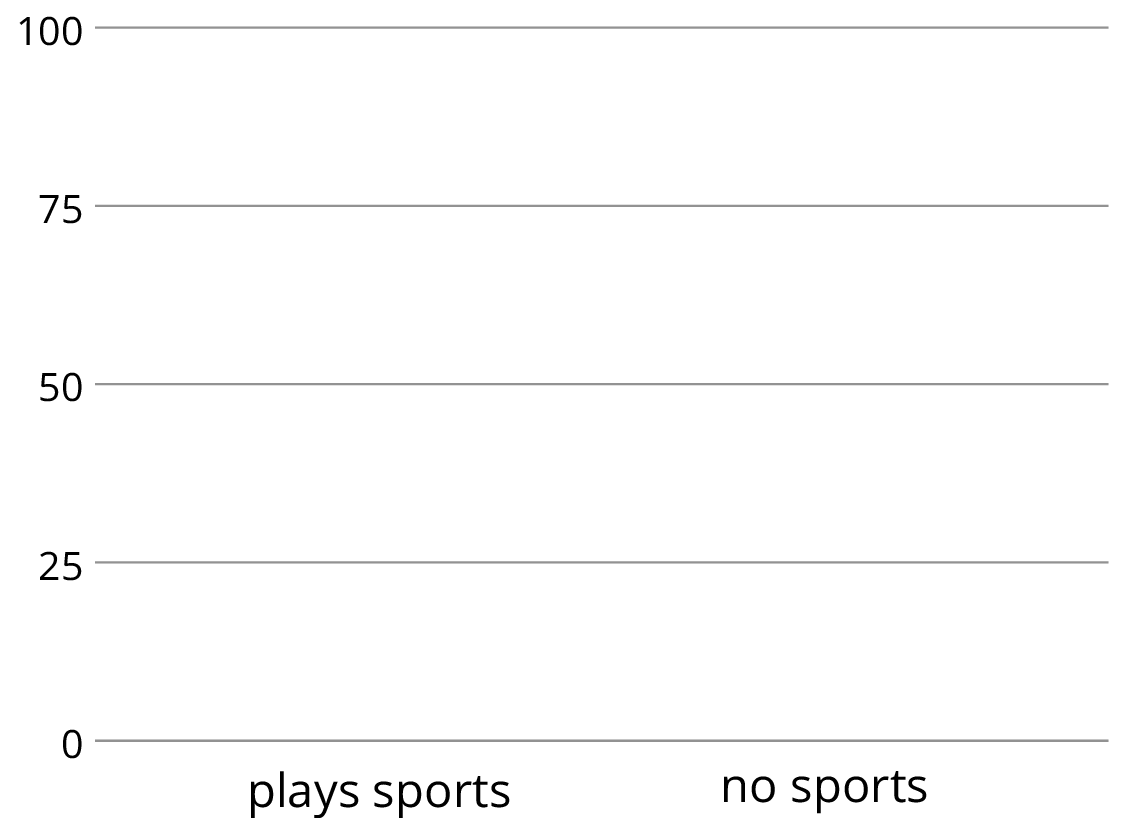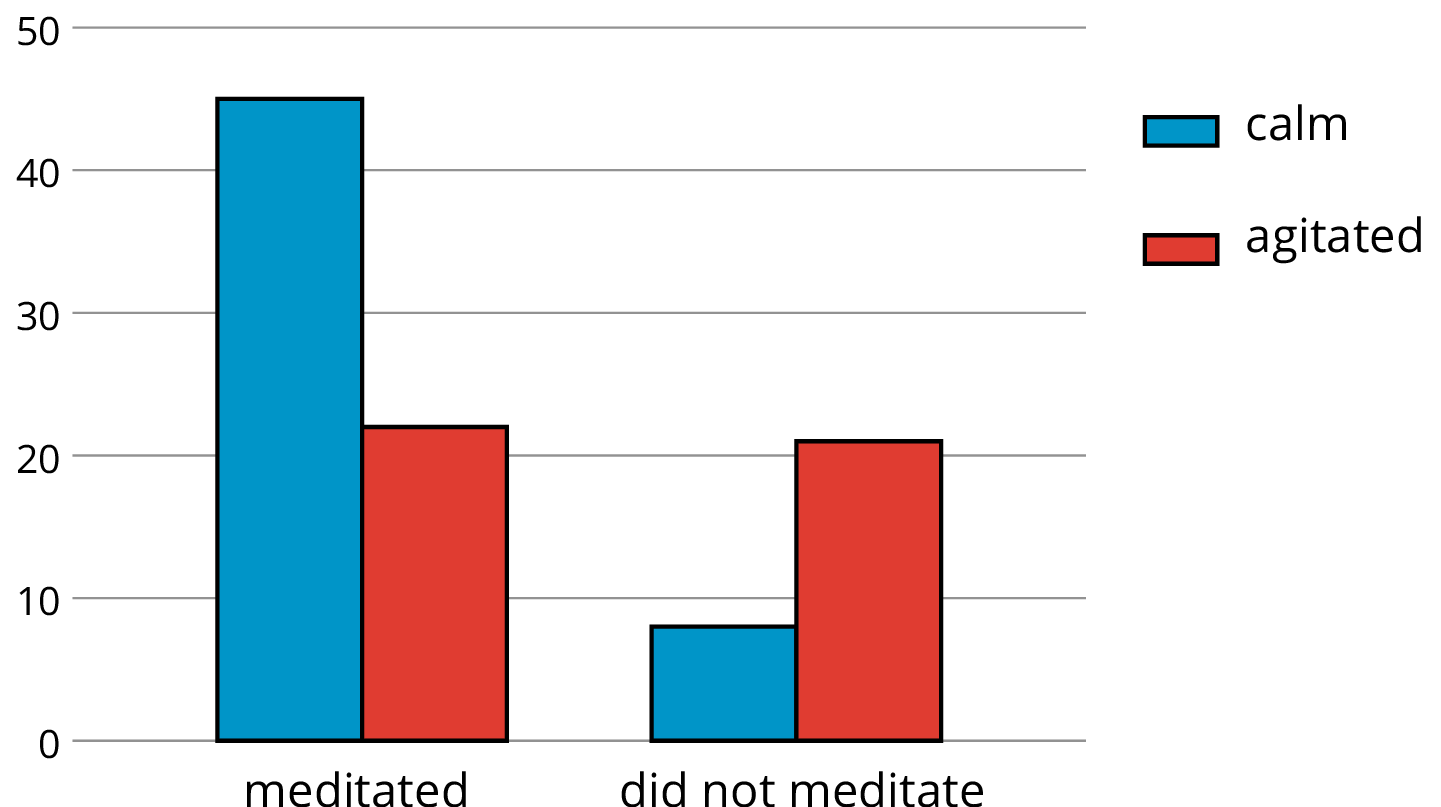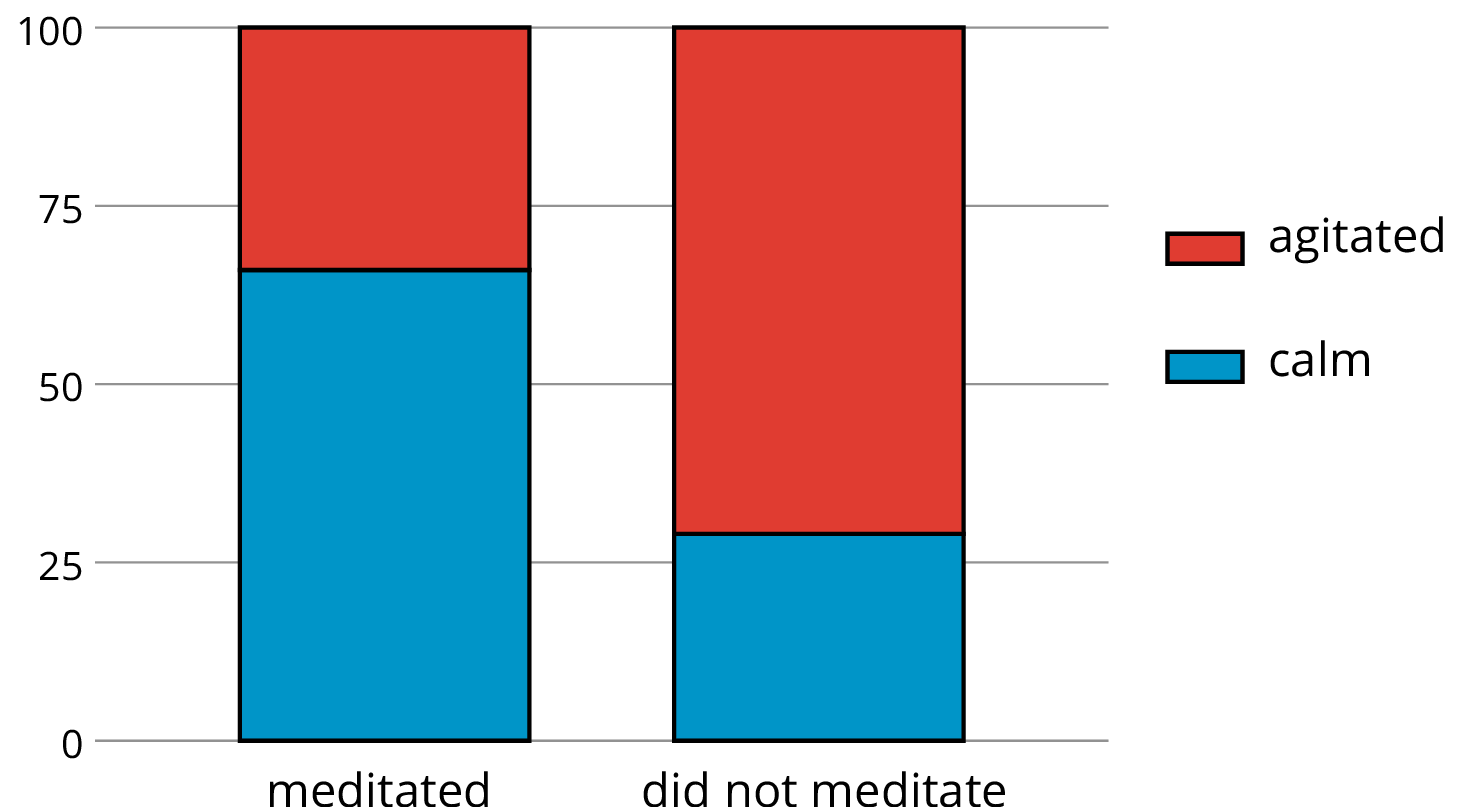10.1: Sports and Musical Instruments
For a survey, students in a class answered these questions:
- Do you play a sport?
- Do you play a musical instrument?
-
Here is a two-way table that gives some results from the survey. Complete the table, assuming that all students answered both questions.
plays instrument does not play instrument total plays sport 5 16 does not play sport total 15 25 -
To the nearest percentage point, what percentage of students who play a sport don’t play a musical instrument?
-
To the nearest percentage point, what percentage of students who don’t play a sport also don’t play a musical instrument?



